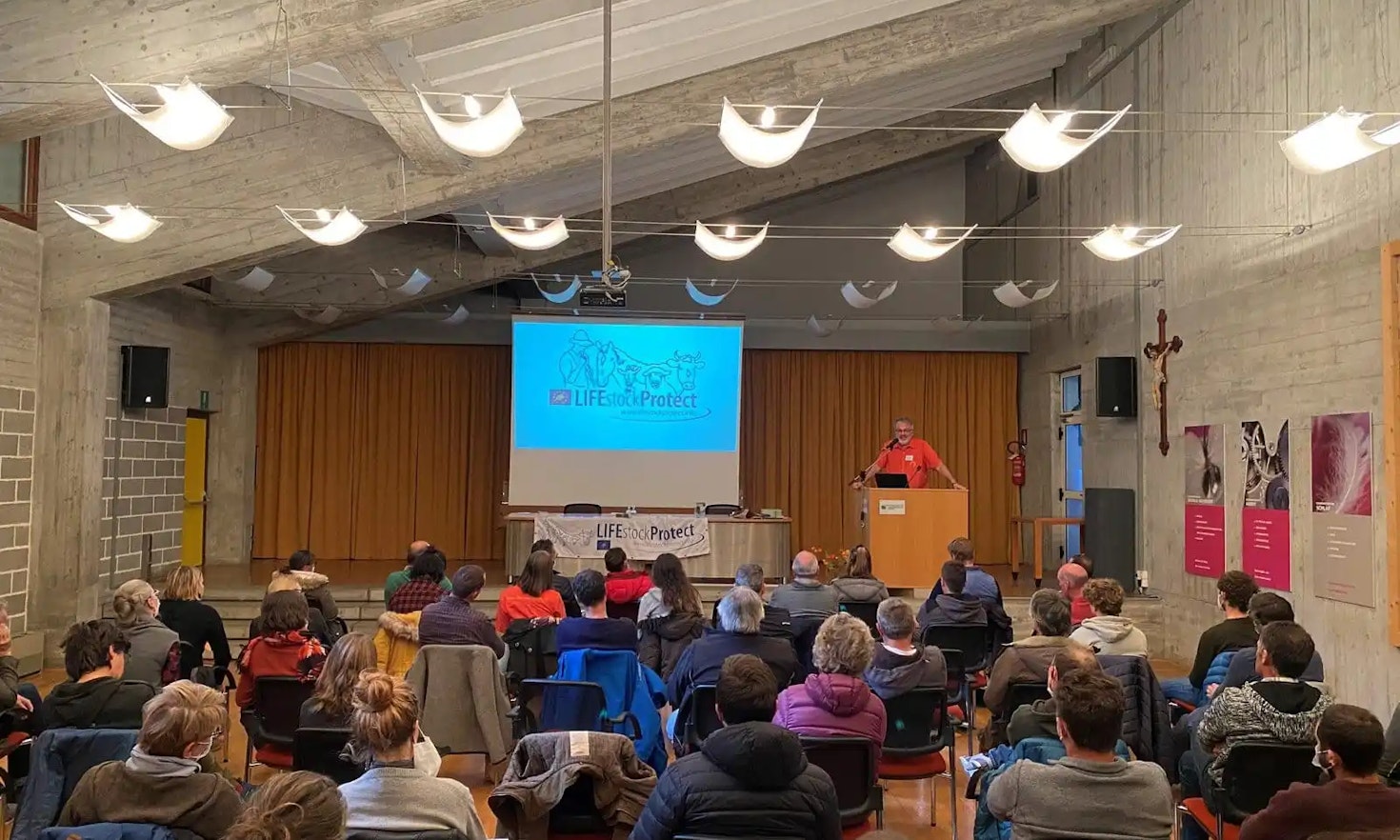
Birrificazione artigianale
 Ricarda Schmidt
Ricarda Schmidt
The value of alpine summer pastures is manifold. They are production facilities for agricultural products, and they make an important contribution to local tourism. But these pastures also have an important ecological value which must be maintained and fostered during times of severe biodiversity losses worldwide. Here, the work of the shepherdesses and shepherds plays a key role, as they ensure guided pasture grazing and thus significantly contribute to preserve and maintain the landscape.
Read about the topic of guided grazing within LIFEStockProtect here.
On the Shepherd’s Day at the Competence Center and agricultural school in Salern, South Tyrol, the activities of the shepherds were the core topic. To gain an insight into the everyday life of this profession, two shepherdesses and one shepherd talked about their work, their experiences and shared their wishes for the future.
First-hand experiences
A young student from Salern talked about her experiences during the last summer on the Plose mountain, close to Brixen, were she herded 240 sheep for the first time in her life. At the beginning of the summer season, the animals were accustomed to the new environment and the daily enclosure in a night pen, which is an important measure considering livestock protection. During the summer her herd grazed from the lower pastures in the valley up to areas about 2.500 meters above sea level. Getting closer towards autumn, they slowly migrated back to the valley. Partly she had to work under very harsh conditions – particularly the fog made work in the mountains difficult. Still, she only could speak about luck that it didn’t snow last summer.
“Sometimes I had the feeling I had to herd the tourists.”
This statement probably sums up another challenge quite well. Sometimes pasture nets were demolished, and her sheep were chased by children or dogs. Nevertheless, she was very enthusiastic about the demanding and strenuous job but wishes for more appreciation for this profession among society.
“Working with nature”, with these words the second speaker summarized his work as a shepherd. He argued that grazing activities increase the quality and quantity of fodder on pastures over the years. In addition, fencing allows the best possible, targeted and even grazing of an area. That keeps the landscape open and promotes biodiversity of alpine fauna and flora. Before heading up to the alpine pasture in spring, he explained that it is necessary to accustom the animals, coming from different owners to the night pen as well as the dogs down in the valley. The night pen protects the animals not only from large carnivores, but also from foxes and stray dogs. In the pen, the sheep lie close together and according to him this also corresponds to the natural behavior and means less stress for the animals than often assumed. The shepherd has also observed increased pregnancy of females in autumn and believes that the daily rounding up of all animals into the night pen contributes to that. The females get pregnant on the alpine pastures during summer and can give birth protected in the barn in autumn. According to his experience no lambs should be born on the summer pasture – their survival chances are low because of harsh weather conditions. As beautiful the job is, it also comes with challenges. For example, the workload related to setting up the fences is very high. He must move the night pen every week to 10 days, and it takes him about five hours. Also, the current lack of staff even reinforces the problem. Besides that, it is difficult to find good herding and livestock guarding dogs – important partners of the shepherd!
The presentations were concluded by a shepherdess who migrates from Friuli in the North of Italy to the Adriatic Sea in the South with about 2.000 sheep, seven to nine shepherding dogs, two livestock guardian dogs and two colleagues during the autumn and winter months. During the year she travels more than 1.000 km. In summer her sheep graze on an alpine pasture. The itinerant shepherdess lives the practice of transhumance which is considered UNESCO World Heritage since 2019 and has been practiced for hundreds or thousands of years. Several forms of transhumance exist globally, but all are based on climate-induced migration to constantly new pastures in an annual rhythm. In the Alps especially the migration to the alpine pastures in summer and the return to the valley in autumn is known.
The itinerant shepherdess’s day is long and exhausting. The day begins with counting and providing for the newborn lambs. In a flock that size sometimes up to 60 lambs can be born in only one night! Afterwards, the animals graze in the open pastures and are kept in the pen over lunch time. In the afternoon the same procedure is repeated before the animals spend the night in an enclosure. In winter the animals primarily feed on the remains of harvested maize and soya-crops, in vineyards and on meadows. A recurring narrative is the lack of staff. A problem which is caused by the low wages and the lack of appreciation of the shepherding profession. The simple life and the difficult working conditions as well as being far away from home are circumstances probably not everyone can cope with. Nevertheless, this extensive form of grazing with a low stocking density per area also benefits landscape preservation. The annual rhythm, the herd and her dogs fulfill the itinerant shepherdess and attract many bystanders in the villages when they pass through. First-hand advice from the expert: starting with adult livestock guardian dogs facilitates the first work experiences with those animals.
What does the future hold? It is clear, that the preservation and maintenance of summer pastures and cultural open landscapes must continuously be supported. Especially with the additional challenge of livestock protection. This not only requires financial resources but also good shepherds. The formation course for shepherds at the agricultural school and competence center Salern is also working towards this goal!
It starts next year and for everyone interested: Click here to register.


This content is licensed under a Creative Commons Attribution 4.0 International license.